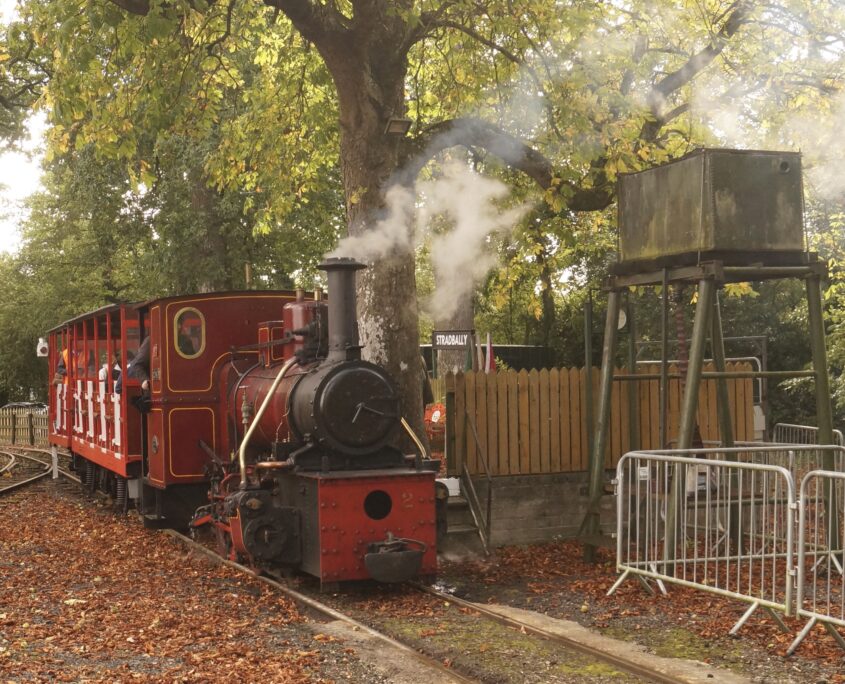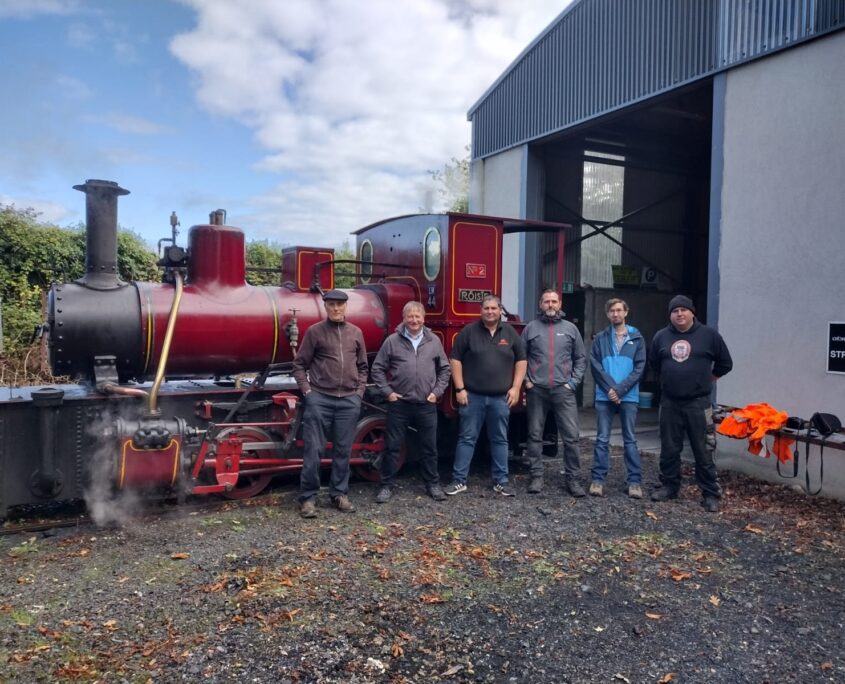Laois is leading the way to de-carbonise and re-fuel the Heritage Railways while keeping everything moving along!
In September, Ireland saw the first passenger train to be hauled by a steam locomotive using a 100% renewable biomass-based coal substitute. This was on the Stradbally Woodland Railway, a short narrow-gauge line with steep gradients. Being in woodland, the old saying ‘from small acorns do great oaks grow’ could be perfectly appropriate for this significant trial. The fuel used was a stove-ready commercial product called ‘Harvest Flame’ that is made via the process of torrefaction from biomass – in this case olive stones, a residue from the food industry. This material is also suitable for small locomotives and traction engine boilers. So, Ireland’s original volunteer run heritage line has now also pioneered a first step towards carbon neutral steam heritage.

the 1st passenger heritage train powered by a 100% renewable biomass coal product.
Photo Credit R. Gwynne
Nicola Glynn, secretary of the Irish Steam Preservation Society (ISPS) said: “We were excited to try this new form of fuel. Our railway and traction engine rally is in a beautiful part of Ireland, and doing our bit to help decarbonise the economy is important to us. Plus, our crews enjoyed not ending the day covered with coal dust, as this is a remarkably clean fuel.”
The ‘Continuity Biocoal’ project is a collaboration between the Irish Steam Preservation Society CLG, Arigna Fuels of Roscommon, The Irish Bioenergy Association (IrBEA) and their partners in Wales, the Severn Wye Energy Agency (SWEA), in the Interreg NWE funded THREE C Project. The initiative highlights the close working relationship between Ireland and Wales (which has many narrow-gauge steam railways of its own) made possible by participation in a series of European transnational projects, that have focussed on finding climate-friendly uses for low value, residual biomass over the last decade.
The Continuity Biocoal project holds out the hope that much of our industrial heritage can avoid dying out and continue to inform, educate, and give pleasure to future generations without damaging our environment further. The UK’s National Railway Museum is also closely following the lead taken by Ireland in this field. Heritage railways and other historic sites have so far helped the public to understand how our communities, culture and society were shaped by the fossil-fuel age; now they can tell the next chapter by showing how we can transition to a Net-Zero-Carbon future, by working together and working smarter. Saving our only home planet need not mean having to give up everything we enjoy.

are L-R, Bob Gwynne – National Railway Museum UK, Colin Keyse – Severn Wye,
Nigel Glynn – Irish Steam Preservation Society, Robert Johnson – Arigna Fuels,
Stephen McCormack – Irish Bioenergy Association (IrBEA),
Sean Cain – Irish Steam Preservation Society. Photo Credit R. Gwynne






